This is Travnik.
This is Travnik.
It's called Travnik. Located in the central region of Bosnia and Herzegovina historical and cultural It's a rich city in every way. Travnik, this is t. its rich texture, its buildings from the Ottoman period, its beautiful landscapes and its cultural heritage It's known as.
Travnik, one of the most important cities in Bosnian history, grew in the region and was sent to the Ottoman Empire. The 19th Minister. Because of the fact that The city of vizirs. It's known as Travnik, with its mosques, madrasas, tombs and architecture. The most Ottoman city in the Balkans It's considered acceptable.
Travnik: One of the historical and cultural treasures of Bosnia and Herzegovina
Travnik is a historically and culturally rich city located in the center of Bosnia and Herzegovina. Located 90 km west of Sarajevo, this city has been home to various civilizations throughout history and has a rich past. Travnik, the capital of the Central Bosnian Canton, is also referred to as the "city of vassals". Here are some highlighted details to get a closer look at Travnik's rich history and cultural characteristics:
Influence of the Ottoman Empire: Travnik played an important role as the center of the Bosnian Province of the Ottoman Empire. As the residence of the governors of Bosnia during the Ottoman period, Travnik was equipped with many mosques, schools, baths, tekke and other structures. The mosques and shrines in the city are among the important structures that reflect the influence of the Ottoman Empire.
Islam and Cultural Heritage: Travnik is a city with countless tombs and mosques from the Ottoman period. These structures bear traces of Islamic culture and art. The mosques in the city form a rich mosaic, reflecting the architectural styles of different periods. In addition, historical educational institutions such as the Fayyad Madrasah also show the importance of Islamic culture and education.
The Nobel Prize-winning writer Ivo Andrić: Travnik is the birthplace of the Nobel Prize-winning Yugoslav writer Ivo Andrić. Ivo Andrić has contributed greatly to the cultural heritage of Bosnia and Herzegovina and the Balkans with his literary works. The Ivo Andrić House in the city is an important point to convey the writer's life and works to visitors.
Historical remains: Travnik has been open to settlement since prehistoric times. With a history dating back to Roman times, the city has archaeological finds from the ancient period. The historical remains are also a great source of wealth for those who want to understand and investigate the city's past.
Cultural diversity: Travnik is a city that has hosted different religions and cultures. Islam, Christianity and other faiths have coexisted in the city for a long time. This is an important feature that reflects Travnik's cultural diversity and tolerance.
Restoration and Conservation Efforts: The historical and cultural artifacts found in Travnik have been preserved and restored over time. Thanks to these efforts, buildings, mosques, and other structures from the Ottoman period have survived to the present day. These historical buildings in the city offer visitors the opportunity to explore its past and cultural heritage.
This is Travnik. It is a culturally rich and historic city that bears the traces of different civilizations throughout history. Shaped by the influences of the Ottoman Empire, this city is still a major attraction for history and culture enthusiasts. With its historical buildings, cultural heritage and important personalities such as Ivo Andrić, Travnik is one of the unforgettable destinations in Bosnia and Herzegovina.
Where is the city of Travnik?
It's called Travnik. of Bosnia and Herzegovina in the middle sections It's a city. It is geographically located in the interior of Bosnia and Herzegovina and is the capital. To the Sarajevo Approximately It 's 90 kilometers . It's in the distance. This is Travnik. On the banks of the Vrbas River is taking place.
Places to visit in Sarajevo This is the Sarajevo-Travnik itinerary. You can study the routes, if you want, from the relevant page. Plan your trip. You can do it.
How to Get to Travnik?
There are several ways to get to Travnik. Most of the time. international visitors, to Bosnia and Herzegovina Arrives by plane or bus And then means of domestic transport He's going to Travnik. Here are some options for transportation to Travnik:
- The airline: If you prefer to come to Bosnia and Herzegovina by plane, the nearest airport is Sarajevo International Airport. There are international flights to this airport. You can use other means of transportation, such as buses or trains, to get from Sarajevo to Travnik.
- The bus: You can reach Travnik by bus from Bosnia and Herzegovina and surrounding countries. You can get to this city by bus from other major cities in Bosnia and Herzegovina and from other parts of Europe.
- The train: The railway network in Bosnia and Herzegovina is also one of the transportation options. However, train lines are more limited, and on some routes the bus may be a more common choice.
- Renting a car: If you are travelling in your own car or planning to rent a car in Bosnia and Herzegovina, especially if you are coming from different parts of Europe, renting a car is also an option. You can transfer to Travnik from Sarajevo or other major cities by your own vehicle.
- Tourist attractions: Some tourist tours can also organize a trip to Travnik, covering important cities within Bosnia and Herzegovina. You can take advantage of the transport and guidance services offered by tourists.
Since Travnik is an important tourist and historical point of Bosnia and Herzegovina, transportation options are usually available. When planning your trip, you can consider your preferred mode of transportation and its suitability.
Highlights of the City of Travnik
Prominent features of the city of Travnik, the Ottoman influence It is still distinguished today as the old and the new (Stari i Novi) Travnik. That's the difference. Travnik and Novi Travnik It's like this. The characteristics of Travnik can be listed as follows:
- The Ottoman heritage: Travnik has many historical structures that bear the influences of the Ottoman Empire. The castle, mosques, baths and old Ottoman houses are among the important structures that reflect the history of the city.
- Fortress of Travnik: Travnik Castle, located on a high hill in the city, is a symbolic symbol of the city. From the top of the historic castle, it is possible to see a magnificent view of the city.
- Plava Voda: Located near the city center, this blue-colored water fountain is a popular resting and picnic area for locals and visitors alike.
- The House of Ivo Andrić: Author Ivo Andrić, winner of the Nobel Prize for Literature, was born and raised in Travnik. The museum house, organized in his name, offers visitors information about the writer's life and works.
-
The Viziers Bridge:
The Viziers Bridge, an arched bridge from the former Ottoman period, is one of the important structures reflecting the history of the city.
Beautiful Scenery: Travnik is located in an area surrounded by natural beauty and mountain scenery. There are suitable areas for nature walks and activities in the vicinity. - Traditional dishes: Travnik is a great place to discover traditional Bosnian cuisine. In particular, you can taste delicacies such as biscuits, answer (small grilled meatballs), sogan-dolma (onion filling).
This is Novi Travnik. Briefly about:
This is Novi Travnik. Located in the central parts of Bosnia and Herzegovina It's a city and a municipality. Settlements whose name begins with the word "Novi", usually. of a new city or region It means his name. Novi Travnik also carries this meaning, a. It's historically and culturally significant. It's a settlement.
The characteristics;
- Location: Novi Travnik is located in the central region of Bosnia and Herzegovina, near the city of Travnik. The city center is located on the banks of the Vrbas River.
- The date: Novi Travnik was founded mainly for industrial and mining activities at the beginning of the 20th century. It was founded at the beginning of the century for industrial and mining activities. For this reason, the city is considered a more modern settlement.
- Industry and Mining: Novi Travnik is the center of industrial and mining activities in the region. Mining deposits and industrial facilities make a significant contribution to the city's economy.
- Cultural events: Novi Travnik hosts local cultural events and festivals. Traditional events and festivities are social events where city dwellers come together.
Novi Travnik, in the central region of Bosnia and Herzegovina With its modern industry and cultural fabric It's a remarkable settlement. While the city attracts attention with its industrial activities and natural beauty, so do local culture and activities. You're an important part of life. It creates.
Activities to do in the city of Travnik
Activities to do in the city of Travnik It's too much. With its historical and cultural richness, the city offers many activities and experiences waiting to be discovered in Bosnia and Herzegovina. Here are some things you can do in Travnik:
- Visit the fortress of Travnik: By visiting Travnik Castle, the symbol of the city, you can follow the panoramic view of the city and discover its historical fabric.
- Explore the buildings of the Ottoman period: Travnik has many historical structures that bear the influences of the Ottoman Empire. You can explore structures such as mosques, baths, old houses, and bridges.
- Visit the Museum of the City of Travnik: The City Museum attracts attention with its exhibitions that introduce the history, cultural heritage and important personalities of Travnik.
- Have a picnic at Plava Voda: Plava Voda, located near the city center, is a nice resting and picnic area. You can spend time in this area like the locals.
- Visit the Ivo Andrić House: You can learn more about the life of the Nobel Prize-winning writer Ivo Andrić by visiting his birthplace.
- Nature Walks and Trekking: The surrounding mountainous areas offer suitable environments for nature walks and trekking. You can discover the beauty of nature.
- Try the traditional flavors: You will have the opportunity to taste the typical cuisine of Bosnia and Herzegovina. You can try local dishes such as bread, cheese, and stuffing.
- Visit the Viziers Bridge: The Viziers Bridge, an arched bridge from the old Ottoman period, is one of the important structures reflecting the historical fabric in the city.
- Participate in cultural activities: You can attend concerts, festivals and other cultural events that are held in the city from time to time.
- Go shopping: You can buy local handicrafts, souvenirs and traditional products in the markets and markets in the city center.
Places to visit in Travnik
Places to go in Travnik can be arranged as follows:
- Fortress of Travnik: This historic castle, which overlooks the city from a hill, is famous for its green tree-covered mountains and impressive scenery. With its historical texture and panoramic view, it offers visitors an unforgettable experience.
- Šarena Džamija (Alaja Mosque) is located in: The Alaca Mosque, which has become a symbol of the city, attracts attention with its colorful decorations and interior decoration. It is a fine example of Ottoman-era architecture and reflects the historical fabric of Travnik.
- The Madrasah of the Apostle Ibrahim Pasha: This historic madrasa, built by Ibrahim Pasha in 1706, is located at the entrance of the city. The madrasa, which bears the characteristics of Ottoman architecture, attracts attention with its rich history and architectural details.
- Plavo Voda (Heaven): What is it? Plavo Voda, located just near the city center, is a water source famous for its cool waters. Here you can take a short break at the water's edge and have a good time in the surrounding cafes.
- Museum of the City of Travnik: The City Museum is a place that exhibits the history and cultural heritage of Travnik. You can visit to learn about historical artifacts, handicrafts and local culture.
- The Sulejmanija Mosque: This historic mosque was built during the Ottoman Empire and reflects the historical atmosphere of Travnik.
- The Travnik market: You can shop at the market in the city center and buy traditional handicrafts, gift items and local products.
- Hurry up, Mr. Mosque: This mosque was built in the 16th century and is a fine example of Ottoman-era architecture. It was built in the 20th century and is a fine example of Ottoman-era architecture.
- The Bath of Daut Pasha: The Daut Pasha Bath, built as an Ottoman bath, has a wealth of history and architecture.
- The peak of Petričevac Hill: Located outside the city, this hill is a great place to enjoy a view of the city. It can be a nice experience to visit, especially at sunset.
- Begova Džamija Mosque is located at: It is another historical mosque located in Travnik and bears traces dating back to the Ottoman period.
- The Blue Drinking Water Fountain: This place, a historic drinking fountain, offers a historical and cultural experience in the city.
Travnik is a city rich in history, culture and natural beauty, so there are many more places to discover. During your trip, you can visit these and other attractions with the help of local guides or tourist information.
What to Eat in Travnik?
It's called Travnik. Since it is a city that offers the outstanding flavours of traditional Bosnian cuisine, you can find some local dishes that you should try during your visit below:
- The answer is: It is one of the most famous dishes of Bosnia and Herzegovina. You can think of them as little grilled meatballs. It is usually served with noodle bread and eaten with onions, red pepper and yogurt.
- The cake: The cake, made from yufka dough and containing various ingredients such as cheese, potatoes, and spinach, is a delicacy that is often eaten for breakfast or between meals.
- Sogan-filled with: This delicacy, called onion filling, is made by chopping onions or filling them with a mixture of rice.
- This is Begova čorba: Begova soup, a broth-based soup, is preferred especially in cold weather. It contains meat, flour, yogurt, and spices.
- The Pita: Yufka is a general term that includes various types of sweet or salty biscuits made with dough. Different options can be found, such as cheese pie, curd pie.
- Sogan-skating: What is it? It is a traditional delicacy made by combining fresh onions with salty cream. It's usually for breakfast.
- The Flood: A tufahija, also called an apple filling, is a boiled apple filled with walnuts and sugar. It's usually eaten for dessert.
- It's called Begova Halva. Thin bulgur is a type of dessert made with ingredients such as sugar and walnuts. It is a delicacy served especially on special occasions and at invitations.
- Baklava: What is it? Baklava, prepared in different layers, soaked in syrup and filled with walnuts or nuts, can relieve your sweet crises.
- This is Ražnjići: ražnjići, which consists of meat cooked in a bottle, is a good option for meat lovers.
In Travnik, you can find these delicacies in local restaurants or cafes. These dishes, typical of traditional Bosnian cuisine, complete the cultural and gastronomic experience of the city.

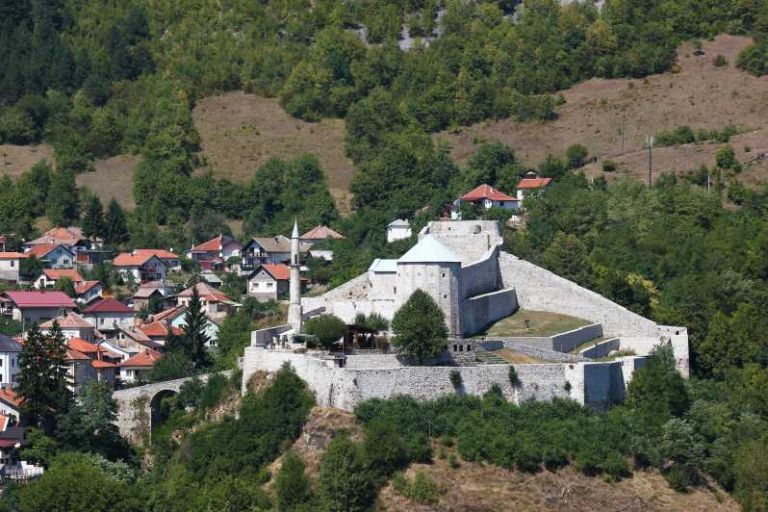
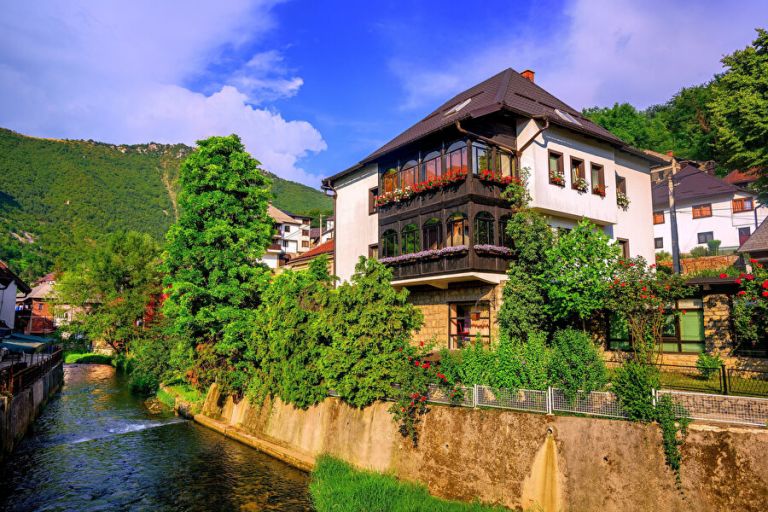
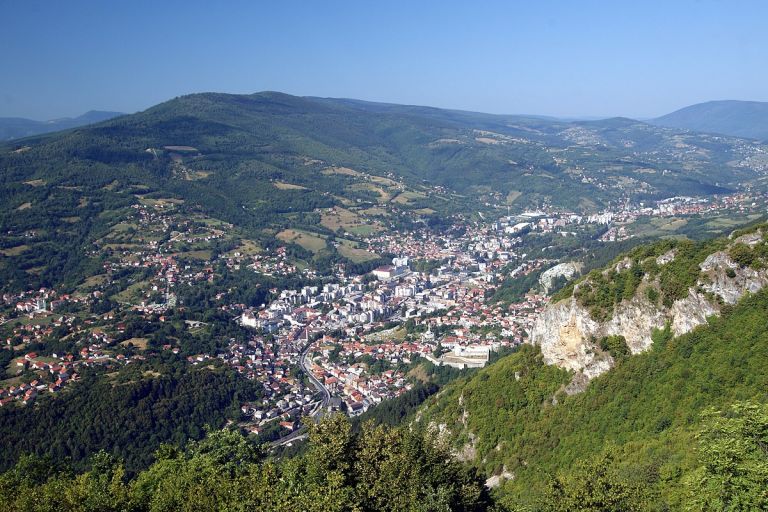
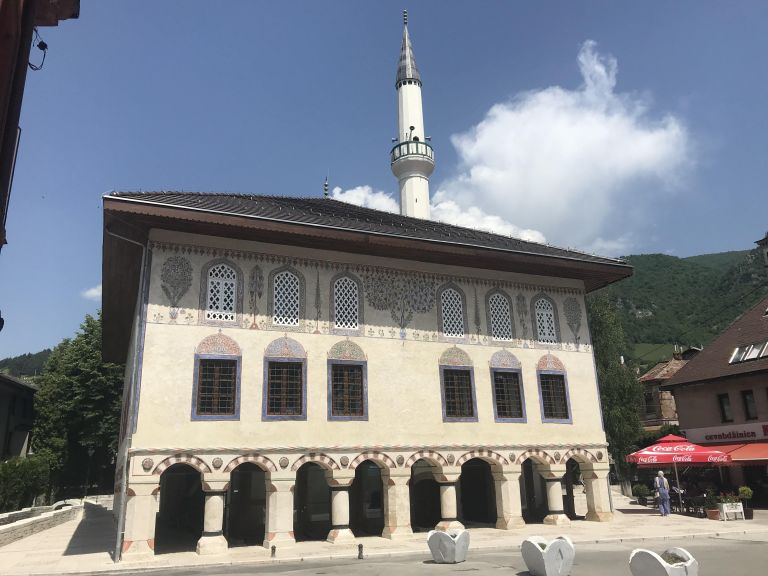
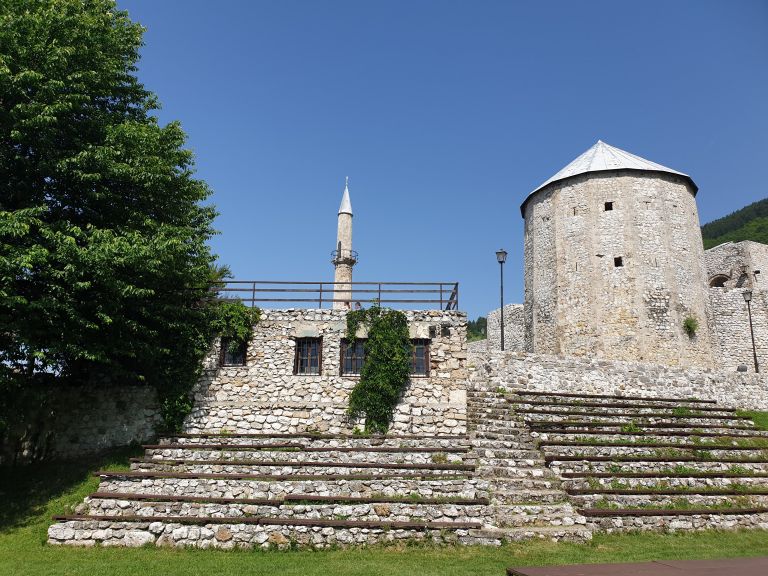
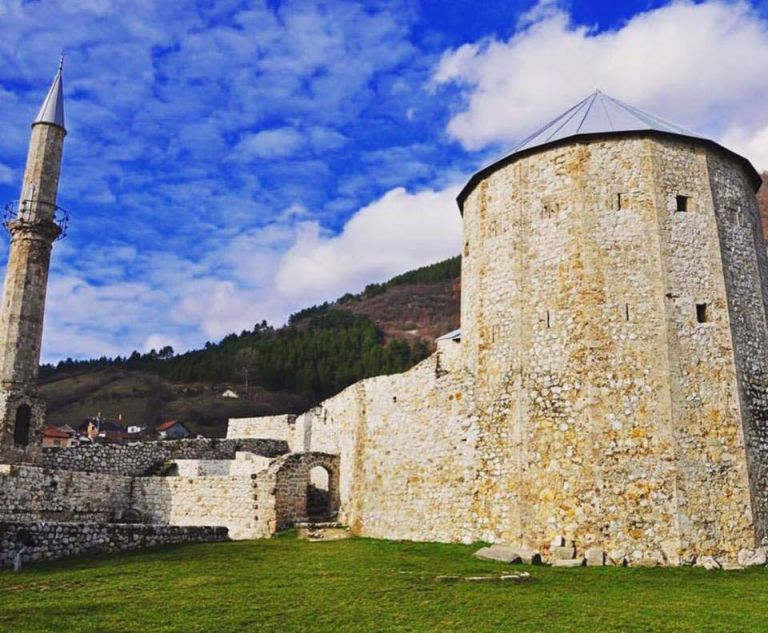
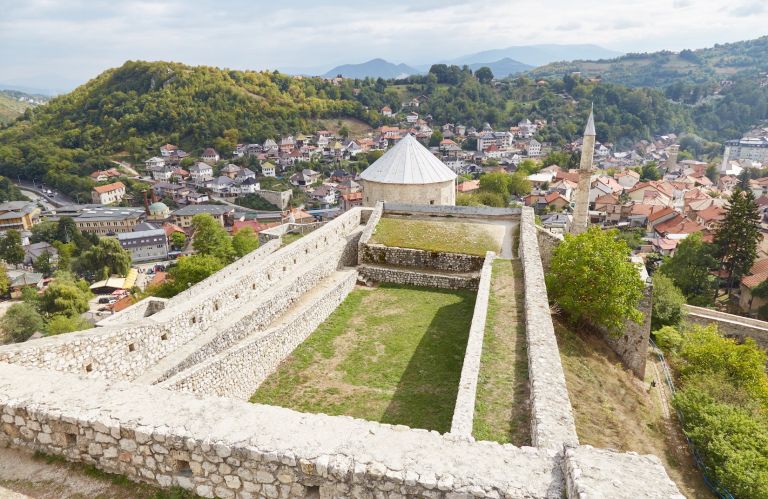







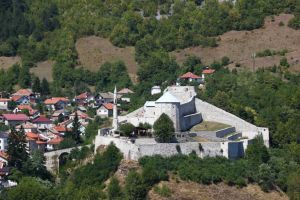

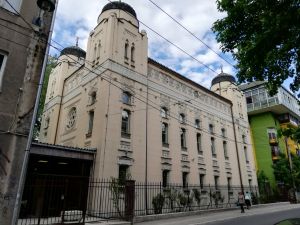
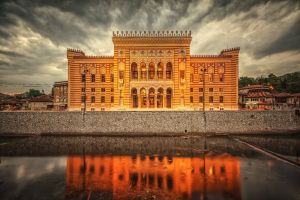
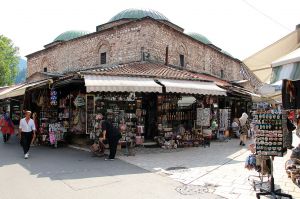
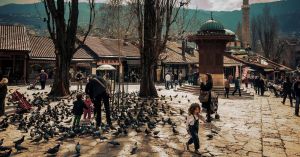
Değerlendirmeler